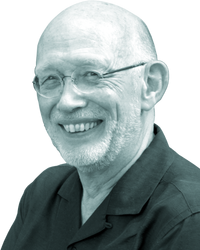
Over het archief
In 2012 verloren we Jean Jacques Peters, voormalig ingenieur van het Waterbouwkundig Laboratorium (1964 tot 1979) en internationaal expert in sedimenttransport, rivierhydraulica en -morfologie. Als eerbetoon aan hem hebben we potamology (http://www.potamology.com/) gecreëerd, een virtueel gedenkarchief dat als doel heeft om zijn manier van denken en morfologische aanpak van rivierproblemen in de wereld in stand te houden en te verspreiden.
Het merendeel van z’n werk hebben we toegankelijk gemaakt via onderstaande zoekinterface.
| [ meld een fout in dit record ] | mandje (0): toevoegen | toon |
 |
| The sand and mud budget of the Zeeschelde since the start of the twenty-first century Plancke, Y.; Vos, G.; Meire, D.; Schramkowski, G.; Vanlede, J.; De Maerschalck, B. (2024). The sand and mud budget of the Zeeschelde since the start of the twenty-first century. J. Soils Sediments online: [1-15]. https://dx.doi.org/10.1007/s11368-024-03917-4
In: Journal of Soils and Sediments. Springer: Heidelberg; Berlin. ISSN 1439-0108; e-ISSN 1614-7480
|
| Beschikbaar in | Auteurs |
| |
| Trefwoord |
|
| Author keywords |
|
| Auteurs | Top | |
|
|
| Abstract |
Materials and methods The sand and mud budget is calculated by combining information from topo-bathymetric surveys, ecotope maps and bed samples. Surveys provide spatial information on the volume changes over time, while ecotopes and bed samples were used to transform the volumes in quantities of sand and mud mass. For this budget, the estuary was divided into spatial segments of ~ 5 km, for which the residual sediment transport was calculated at both its down-estuarine and up-estuarine boundary. At the most up-estuarine boundary, measured sediment fluxes were used as the boundary condition. Results and discussion The residual sand transport was found to be up-estuary over a large part of the Zeeschelde. Temporal differences are rather small, while spatial patterns relate to the geometric characteristics of the estuary, as transports decrease up-estuary as also width and depth reduce. The residual mud transport was found to be down-estuary over almost the full Zeeschelde. Temporal and spatial differences are relatively small. Changes between sand and mud transport are explained by means of a 1D sediment transport model. Conclusions Variation of freshwater discharge was found as an explanation of the temporal variation in residual transport, both for sand and mud. The knowledge of processes controlling sediment budgets is crucial to optimize future sediment and morphological management of the estuary. These new insights, obtained from data-analysis, emphasize the importance of good data (especially topo-bathymetric data), and will allow the improvement of state-of-the-art numerical models, that can be used to improve our system understanding and optimize sediment management. |
| Top | Auteurs |

